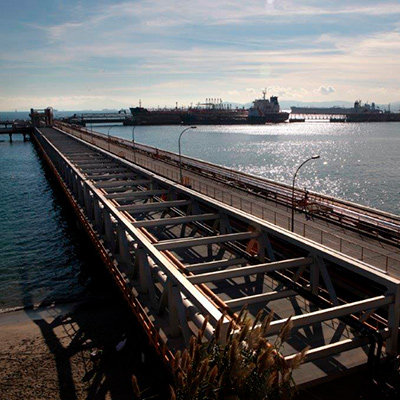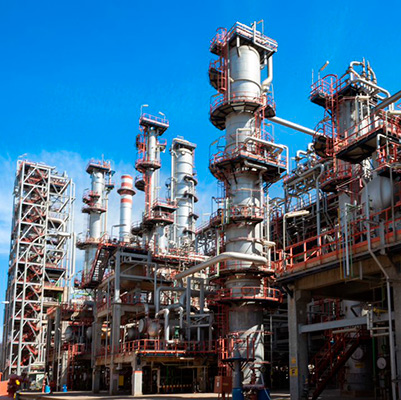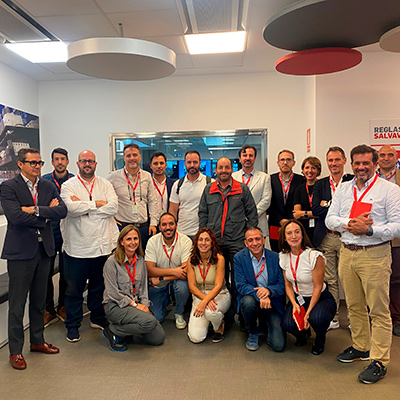- The voluntary EMAS environmental statement demonstrates Cepsa's commitment to transparency, innovation, and responsibility to the territory
- San Roque Energy Park achieves a 5.3% reduction in water consumption compared to last year and a 15% reduction in the last three years. In the chemical plant's case, water savings are 17%
Rosendo Rivero, director of the San Roque Energy Park, has highlighted "the commitment of all Cepsa's professionals in San Roque and the Environmental Protection team when working on this documentation. I would like to highlight the effort we are making to reduce our water consumption: we are committed to recycling and reusing water both in our current processes and in the implementation of new projects. The statement we are presenting is one more step forward in Cepsa's energy transition and that of its customers, which will place Campo de Gibraltar and Andalusia as key players in Europe's energy independence."
Furthermore, Javier López Pupo, director of the Puente Mayorga Chemical Plant, emphasized that "in 2023, we will continue to make progress in our sustainability objectives, focusing on the production of green molecules, such as NextLAB products, which will enable us to reduce our carbon footprint and, consequently, our customers'. All of this in order to be pioneers and leaders in the detergent sector, contributing to a better world for everyone. Moreover, we continue to work on developing new projects, in line with our Positive Motion strategy, optimizing and being more efficient in our processes in order to reach zero net emissions
by 2050."
Improvements in water and climate management
Both industrial centers have met the limits on atmospheric emissions established in the Integrated Environmental Authorizations. In the case of the San Roque Energy Park, its sulfur dioxide (SO2) emissions are at the lowest levels in the historical series. It has also purchased equipment and installed an electrostatic separator at the FCC unit, which will reduce particle emissions by 38%. The Puente Mayorga Chemical Plant has focused its efforts on reducing emissions by installing new electrostatic precipitators.
The company has a Circular Economy roadmap, recognized by AENOR certification, based on minimizing the capture of fresh water, maximizing the use of waste as a raw material, minimizing the sending of waste to controlled deposits and caring for biodiversity. Throughout 2023, La Rábida Energy Park has achieved a 5.3% reduction in water usage compared to last year and an 15% reduction compared to 2021.
In addition, the start-up of a new water recirculation plant at the end of the year means the recycling of this resource and, as a result, another 25% saving in consumption, with respect to 2023, as a result of Cepsa's commitment to the efficient use of a scarce resource such as water, especially in areas of water stress, such as the Campo de Gibraltar.
In addition, the water treatment plant at the Energy Park also treats the water waste from the Puente Mayorga Chemical Plant. The environmental statements for both industrial centers indicate that the volume of effluents was 39.5% lower than authorized, and the authorized monthly average values were complied with at all times.
The company also has an agreement with the public company Aguas y Servicios del Campo de Gibraltar (ARCGISA) to use regenerated water from the region's future wastewater treatment plant in its industrial facilities, which will be used to produce green hydrogen.
In the chemical plant, in addition to achieving a 17% saving in water consumption, improvements in production have been implemented through the incorporation of sustainable raw materials for LAB production, resulting in the production of NextLAB. Thanks to the start-up of the Detal unit, which has made the Puente Mayorga Chemical Plant the first chemical plant in the world to evolve the technology for the production of biodegradable detergent raw materials, the facility has reduced waste generation by up to 50% in the last five years.
In addition, Cepsa works in San Roque to be more efficient in energy consumption, which mitigates the environmental impact of the processes, since a reduction in energy consumption implies a lower emission of both greenhouse gases and others related to air quality. Cepsa in San Roque is certified under the ISO 50001 standard, which aims to promote energy efficiency, reduce greenhouse gas emissions, and increase the use of surplus energy.
According to both statements, audited by AENOR, the San Roque Energy Park and the Puente Mayorga Chemical Plant achieved the single certification of the environmental management system in accordance with the ISO 14001 standard, as well as the validation of the EMAS Environmental Statement. This statement is an environmental management tool that arises from the voluntary regulations of the European Union and recognizes those organizations that have implemented a management system and have made a commitment to continuous improvement, verified through independent audits. The purpose of this publication is to provide the public and other interested parties with information on the environmental performance of industrial sites and continuous improvement in environmental protection. In addition, the environmental report for Cepsa's maritime terminal was also verified in compliance with the Puertos del Estado Guide to Environmental Best Practices.
In addition, the environmental statements contain information on other aspects ranging from noise control to air emissions management and training and awareness-raising activities for the company's own personnel and auxiliary companies, and are always available to the public and to institutions and organizations.
Through its Foundation, created in 2016, Cepsa works proactively in the defense and improvement of biodiversity in the areas surrounding its production centers. An example of this is the recovery and enhancement of the Madrevieja Environmental Station in San Roque, a natural space where the wetland is preserved and where environmental education activities and biodiversity projects are carried out. The Madrevieja Environmental Station has received more than 14,700 visitors since it was opened to the public ten years ago and has launched projects for the recovery of species such as the barn owl and the European pond turtle.
The company has enabled the following e-mail address to answer any questions about the environmental statements and their content: comunicacion.sanroque@cepsa.com.



